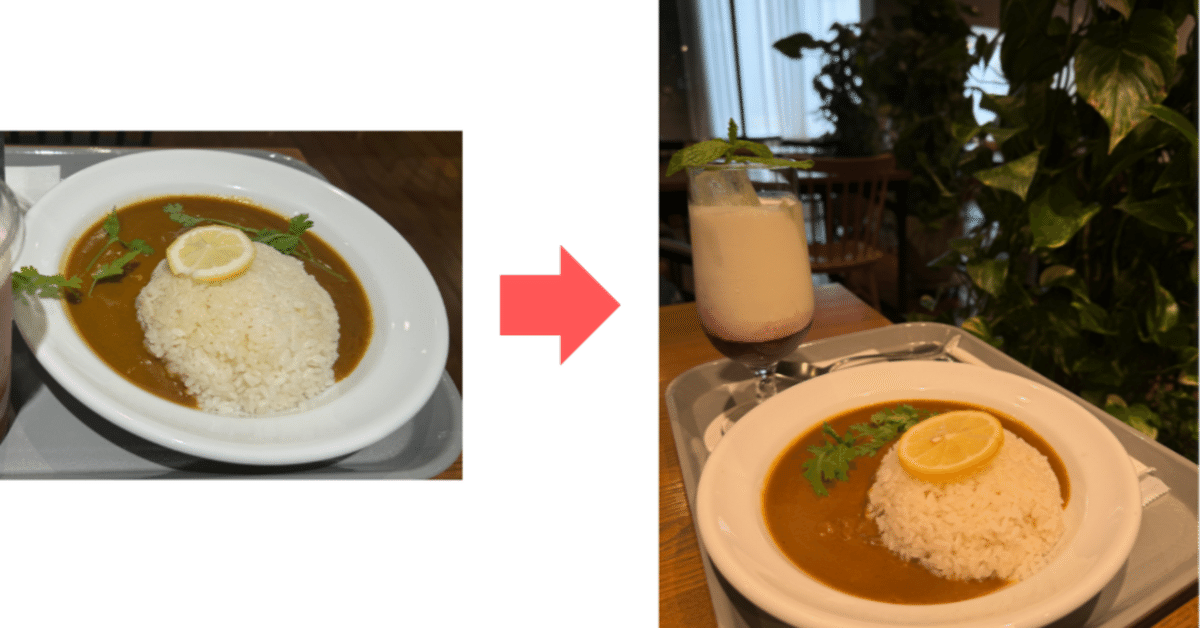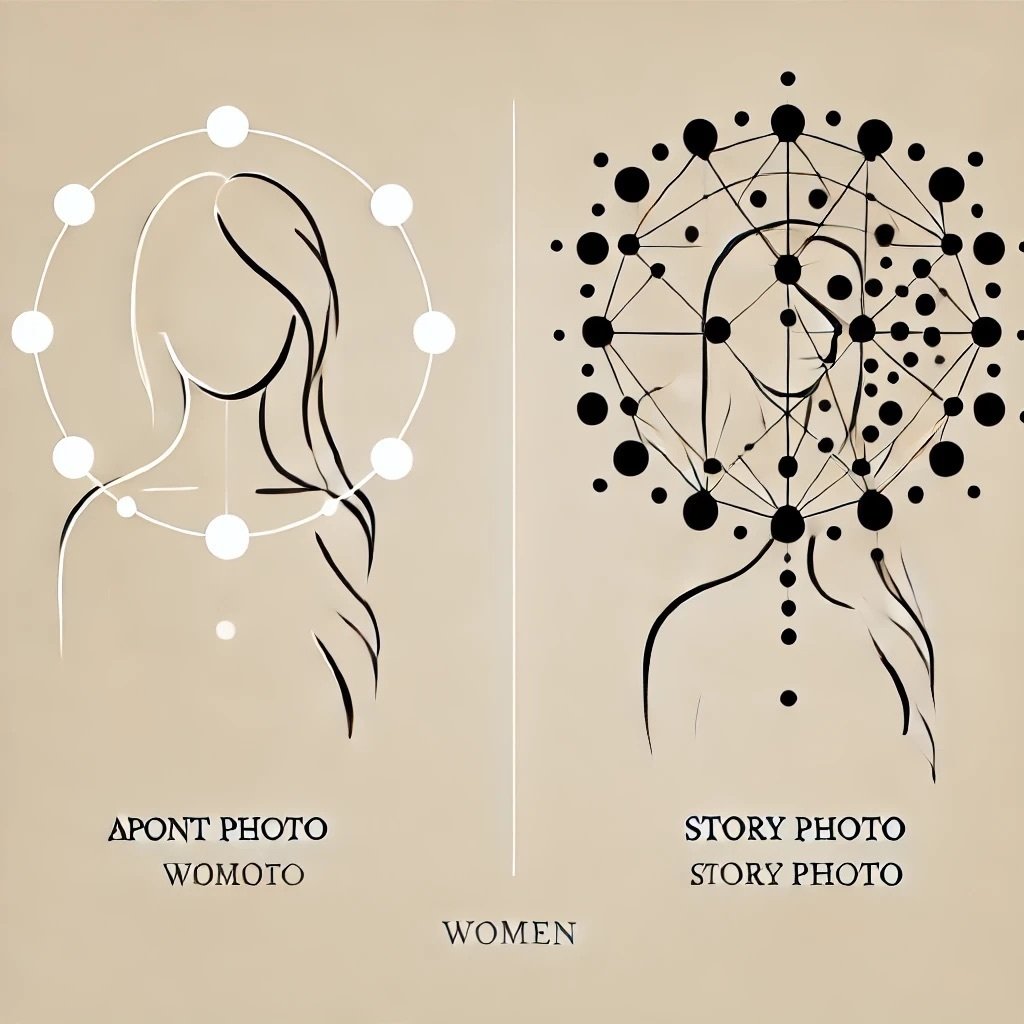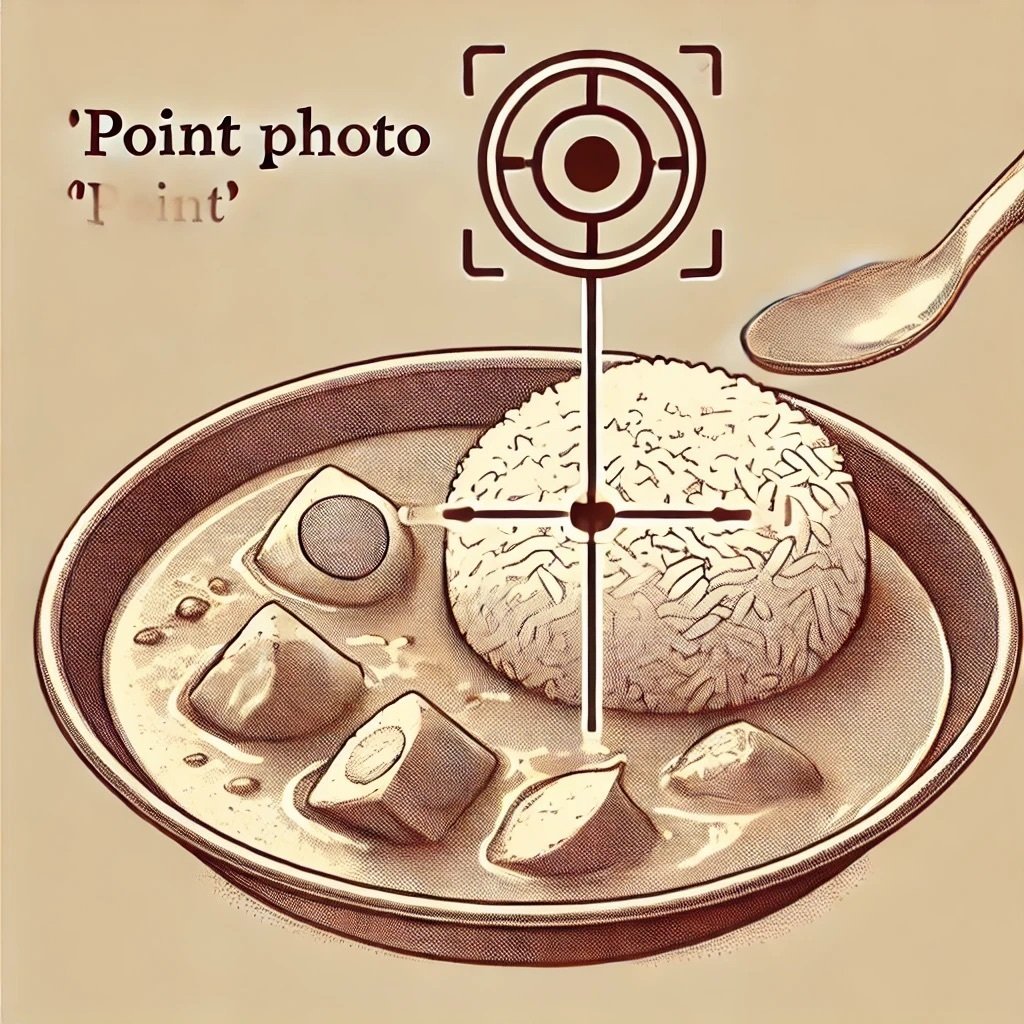
点写真からストーリー写真へ
はじめに
私たちの家族は、昔から写真を撮ることに対して苦手意識を持っていました。母親は特にその傾向が強く、写真を撮るとブレてしまうのが嫌で、カメラを手に取ることさえ避けていました。私もまた、母の影響を受けて、写真を撮ることに対して苦手意識を持つようになりました。しかし、ある日、私は写真撮影の技術を向上させたいという思いに駆られました。そして、写真を上手く撮るためには「構図」が重要であることを学びました。
「構図」を意識して撮影を試みるようになりましたが、思ったように上手く撮れませんでした。何が原因なのか悩みましたが、あるときふと、写真を「点」として捉え、アップで撮影していたことがうまく撮れない理由の一つであることに気づきました。それは、写真の中で孤立した「点」を切り取っていたからです。
1. 写真における「点」と「ストーリー」

写真において、単なる「点」の写真と「ストーリー」のある写真には大きな違いがあります。「点」の写真とは、特定の対象物や一部を切り取って撮影することで、その瞬間や対象の詳細に焦点を当てるものです。しかし、これだけでは、写真全体としての意味や感動が伝わりにくいことがあります。一方、「ストーリー」のある写真とは、複数の「点」をつなげ、その背後にある物語や情景を伝えるものです。これにより、写真を見る人は、単なる画像以上のものを感じ取ることができます。
2. 【例】「点」の写真

例えば、ある日私はカレーを食べに行きました。そのカレーが非常に美味しかったので、その魅力を伝えたいと思い、カレーをアップで撮影しました。湯気が立ち上るカレーのスパイスの香りや、鮮やかな色合いを捉えようとしましたが、それでもその写真からは、ただの「点」しか伝わりませんでした。私の写真には、そのカレーを食べた場所や、その日の天気、共に食事を楽しんだ人々の笑顔が欠けていました。
3. 【例】「ストーリー」のある写真

再び同じカレー店を訪れたとき、私はその日の全体的な雰囲気を捉えようと心がけました。カレーだけでなく、店内のインテリアや窓から差し込む柔らかな光、周りの客たちの楽しそうな会話など、すべてがそのカレーをさらに美味しくしていたことに気づきました。今回はカレーを主役に据えながらも、お店全体を背景に撮影し、その場の雰囲気を写真に閉じ込めました。このように、カレーを含む環境全体を撮影することで、写真に「ストーリー」を持たせることができたのです。
4. 【例】ストーリーのある写真(柳瀬さんが撮ったカワセミ)

柳瀬博一の著書『カワセミ都市トーキョー: 「幻の鳥」はなぜ高級住宅街で暮らすのか』には、カワセミのストーリーのある写真が数多く収められています。著者は、カワセミという小さな鳥が大都会の中でどのように生き抜いているのか、その姿を様々なシーンで捉えています。写真だけでなく、それぞれの写真に対する著者自身の解釈や背景説明が添えられており、その文章を読むことで写真の奥深さを感じることができます。
私はまず、写真を見て自分なりのストーリーを想像します。そして、著者の説明を読むと、ほとんどの場合、自分の想像とは全く異なる視点が提供されます。しかし、そのギャップこそが楽しく、写真に「ストーリー」があることの醍醐味だと感じます。ストーリーのある写真は、撮る側にも見る側にも、深い楽しみと感動を与えてくれるのです。
Introduction
In my family, none of us have ever been particularly good at taking photos. My mother, in particular, dislikes taking pictures because they often turn out blurry, so she tends to avoid using the camera altogether. Influenced by her, I also developed an aversion to photography. However, one day, a desire to improve my photography skills began to grow within me. I learned that the key to taking good photos lies in understanding "composition."
I started trying to incorporate composition into my photography, but despite my efforts, the results were not what I had hoped for. I pondered the reason behind this and eventually realized that one of the issues was that I was focusing too much on capturing isolated "points" in close-up shots. This approach, I discovered, was what was holding me back from creating more satisfying photographs.
1. The Difference Between "Points" and "Stories" in Photography
In photography, there's a significant difference between capturing "points" and creating a "story." A "point" in a photo refers to focusing on a specific subject or detail, emphasizing that particular moment or object. However, such photos often lack the broader context or emotional resonance that can make a photograph truly compelling. On the other hand, a photo with a "story" connects multiple "points," conveying the narrative or atmosphere behind the image. This approach allows the viewer to experience something beyond the image itself, feeling the story within.
2. Example: A "Point" Photo
For instance, one day I went out for a meal and ordered a curry. The curry was so delicious that I wanted to capture its appeal in a photograph. I focused on taking a close-up shot of the curry, trying to capture the rising steam, the vibrant colors of the spices, and the texture of the dish. However, despite my efforts, the photo only conveyed a single "point"—the curry itself. What was missing from the image were the details that made the meal special: the ambiance of the restaurant, the weather that day, and the smiles of those who enjoyed the meal with me.
3. Example: A Photo with a "Story"
When I returned to the same curry restaurant, I made an effort to capture the overall atmosphere of the day. I realized that the interior design, the soft light streaming through the windows, and the cheerful conversations of the other patrons all contributed to the enjoyment of the meal. This time, I positioned the curry as the focal point but included the entire restaurant as the backdrop, encapsulating the mood of the scene in the photo. By doing so, I was able to give the photo a "story," connecting the curry to its surrounding environment.
4. Example: Hiroichi Yanase's Kingfisher City Tokyo: Why the "Phantom Bird" Lives in a High-End Residential Area
In Hiroichi Yanase's book Kingfisher City Tokyo: Why the "Phantom Bird" Lives in a High-End Residential Area, there are many photos that tell a story about the kingfisher. Yanase captures the small bird in various scenes, showcasing how it survives in the bustling metropolis. Alongside the photos, the author provides his own interpretations and background explanations, deepening the reader's understanding of the images.
I like to first look at the photos and imagine the story they tell. Then, I read the author's explanations, and more often than not, my imagination differs from what the author intended. However, it's this discrepancy that makes it enjoyable, and it highlights the beauty of photos with a "story." Such photos offer both the photographer and the viewer a deep sense of enjoyment and emotional impact.
この記事が気に入ったらサポートをしてみませんか?
